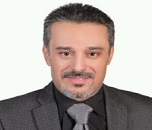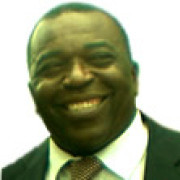Track 1: Skeletal Muscular and Integumentary Systems
Your connective tissues, such as ligaments tendons, and cartilage are part of your musculoskeletal system The framework for your muscles and other soft tissues is provided by your skeleton. Together, they help you move, support your body weight, and keep your posture. Musculoskeletal system issues can be caused by a wide variety of diseases and ailments. Pain and restricted movement can be brought on by ageing, accidents, congenital anomalies and disease. By concentrating on your general health, you can keep your musculoskeletal system in good shape Maintain a healthy weight, engage in regular exercise, eat a balanced diet, and schedule checks with your doctor
Track 2: Immune System and Disease
An organism is protected from diseases by its immune system, which is a network of biological functions it can distinguish between the organism's own healthy tissue and a wide range of pathogens, such as viruses, parasitic worms cancer cells, and foreign things like wood splinters The immune system is divided into two main subsystems in many species. To a large variety of circumstances and stimuli the innate immune system offers a predefined reaction. By learning to recognise chemicals it has previously met, the adaptive immune system responds specifically to each stimulus Both rely on molecules and cells for their operations
Track 3: Nervous and Endocrine Systems
According to biology's classical view of the nervous system, an animal's nervous system is a highly sophisticated component that coordinates its movements and sensory information by sending and receiving signals to and from various regions of the animal's body. In order to react to such situations, the nervous system and endocrine system collaborate to detect environmental changes that have an effect on the body. Around 550 to 600 million years ago, worm-like invertebrates were the first to develop nerve tissue. Recent research on the existence and function of electrical signals in plants has, however, called into question this conventional wisdom. The existence of a plant nervous system and the need for the development of the scientific discipline known as plant neurobiology have been suggested by several researchers in light of these discoveries
Track 4: Digestive and Excretory System
The excretory system is a passive biological system that eliminates superfluous pointless elements from an organism's body fluids in order to support internal chemical balance and guard against injury excretory systems have two roles: they eliminate metabolic wastes and remove used-up and decomposed substances from the body in a liquid or gaseous condition. In mammals, including humans and other amniotes birds, reptiles, and mammals the majority of these chemicals are expelled from the body by perspiration and, to a lesser extent, exhalation. The excretory system is only thought to consist of the organs employed exclusively for excretion. The term only relates to the urinary system in its strictest definition. Though as excrement Excretion, however, encompasses a number of processes that are relatively loosely connected, therefore it is not frequently included in more strict categories of anatomy or function. The overall health of the organism depends on the system's performance because the majority of healthy organs generate waste products including metabolic waste. A significant medical illness such as renal failure results from one or more of the systems breaking down
Track 5: Circulatory and Respiratory Systems
The heart, blood vessels, and blood itself circulate throughout the entire body of a human or other vertebrate through the blood circulatory system Included in it is the cardiovascular system, also known as the vascular system, which is made up of the heart and blood arteries (from Greek cardia meaning heart and from Latin vascular meaning vessels the circulatory system is divided into two sections the systemic circulation or circuit and the pulmonary circulation or circuit. Some sources also refer to the circulatory system as the cardiovascular system or vascular system Your body's network of tissues and organs that aids in breathing is called the respiratory system. Your lungs, blood vessels, and airways are all a part of it. A component of the respiratory system are the muscles that move your lungs
Track 6: The Human Body
The physical makeup of a person is their body. It is made up of a variety of cell types that work together to form tissues and later organ systems. They guarantee the body's viability and equilibrium It has a head, neck, trunk, arms, legs, and feet. The arms and hands are attached to the legs and feet. Anatomy, physiology, histology, and embryology are all studied in relation to the human body. The body has recognized anatomical variations. The focus of physiology is on the systems and organs of the human body and how they work. To keep homeostasis, with appropriate quantities of nutrients like sugar and oxygen in the blood, numerous systems and mechanisms interact. In order to help, scientists, doctors, physiologists anatomists and artists all study the human body
Track 7: Homeostasis
A important idea in comprehending how our bodies function is homeostasis. It refers to maintaining consistency and is derived from the words "similar" and "stasis," which both indicate "stable." Homeostasis is a property of a system that manages its internal environment and tends to maintain a steady, largely constant, condition of properties, according to a more rigorous definition. In our bodies, homeostasis is a continuous process. Our body composition essentially stays the same even as we eat, sweat, drink, dance, eat some more, and devour salty fries. No matter what you did, if someone took ten blood samples from you over the course of a month, the levels of glucose, sodium, red blood cells, and other blood components would remain largely consistent assuming fasting before drawing blood of course Whatever the water content
Track 8: Immune System and Disease
A network of biological processes called the immune system guards an organism against disease. It can distinguish between the organism's own healthy tissue and a wide range of pathogens, such as viruses, parasitic worms cancer cells and foreign things like wood splinters There are two main immune system subsystems seen in many species. The innate immune system responds to a variety of events and stimuli in a predetermined way. The adaptive immune system learns to recognise chemicals it has previously met and responds to each stimulus in a way that is specific to that stimulus. Both rely on molecules and cells to carry out their respective tasks Almost all living things have some sort of immune system Bacteria have a simple immune system in the form of defense-inducing enzymes
Track 9: Blood/Hematologic System
Blood is a dynamic fluid made up of cellular and plasma components that are constantly being recycled and renewed. Like in other physiological systems, the vascular endothelium and a narrow range of anticoagulation are responsible for closely controlling the amounts of these components. The peripheral blood smear, which enables doctors to evaluate the functional status of the bone marrow during cytopenic states, is a quick, trustworthy and affordable means of looking at hematological problems
Track 10: Organization of the Human Body
The human body is a single structure but it is made up of billions of smaller structures of four major kinds cells, tissues organs and systems. An organ is an organization of several different kinds of tissues so arranged that together they can perform a special function. A system is an organization of varying numbers and kinds of organs so arranged that together they can perform complex functions for the body
Track 11: Genetics and Heredity
The study of genes, genetic diversity, and inheritance in living things is the focus of the biological field of genetics. Although heredity had been observed for thousands of years, Gregory Mendel, a Moravian scholar and Augustinian friar working in Brno in the 19th century, was the first to investigate genetics in a scientific manner. Mendel examined the patterns of trait inheritance or the transmission of traits over generations from parents to children
Track 12: Integumentary System
The group of organs making up an animal’s skin’s top layer makes up the integumentary system. It is made up of the animal's skin and appendages which act as a physical barrier separating the inside environment from the outside environment in order to keep the animal's body healthy and protected. Hair, scales, feathers, hooves, and nails make up the integumentary system. It can protect deeper tissues, eliminate wastes, control body temperature, and manage water balance. It also serves as the attachment place for sensory receptors that sense pain, pressure, temperature, and other bodily sensations
Track 13: Respiratory Anatomy
The respiratory system also known as the respiratory apparatus or ventilatory system is a biological system in both plants and animals that consists of a variety of organs and structures that are employed for gas exchange. Depending on the organism's size, environment, and evolutionary background, the anatomy and physiology that cause this vary widely. Land animals internalise their respiratory surface as the linings of their lungs
Track 14: Digestive Anatomy
The human digestive system is made up of the gastrointestinal tract as well as the digestive organs that support it the tongue, salivary glands pancreas liver and gallbladder Digestion is the breakdown of food into smaller and smaller components until it can be absorbed and assimilated by the body
Track 15: Physiology
The scientific study of the functions and mechanisms of a living system is known as physiology. Physiology is a branch of biology that studies how organisms, organ systems, individual organs, cells, and biomolecules carry out chemical and physical functions in living systems






